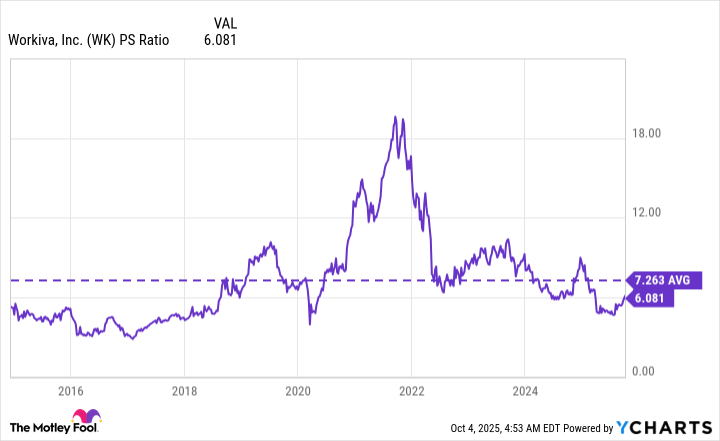Operating a large organization can be challenging, especially for managers tasked with overseeing hybrid workforces with employees stationed all over the world. When it comes time to compile critical reports for executives or even regulators, pulling together all the necessary data from dozens of digital applications can be a time-consuming nightmare.
Workiva (WK -2.40%) developed a unique platform that connects many of the productivity, storage, and finance applications employees use each day so managers can access all the data they need in one place. Now the company is using artificial intelligence (AI) to make the platform even more powerful.
Workiva stock is down 49% from its 2021 record high, when a frenzy in the technology sector drove its valuation to an unsustainable level. However, given the company's recent financial results and its enormous addressable market, here's why investors might want to buy the dip.

Image source: Getty Images.
Introducing Workiva AI
Once a manager pulls data onto the Workiva dashboard, they can rapidly compile reports using a series of ready-made templates. However, no two businesses are exactly the same, so even one-size-fits-all solutions sometimes require a few tweaks. In the past, the manager compiling the report would make those adjustments manually, but they can now shift some of the burden to a new AI-powered assistant called Workiva AI.
For example, let's say a compliance officer needs to draft a cybersecurity disclosure statement for their organization's quarterly earnings filing with the Securities and Exchange Commission. They can write a custom prompt asking Workiva AI to generate the disclosure instantly, or they can open Workiva's prompt library to find a ready-made solution and tailor it to their specific needs.
Managers can also access the Workiva AI chat function from anywhere in the platform if they need help with a specific task. The chatbot is already familiar with all the documents and data the organization has loaded into Workiva, so it stands ready to provide valuable insights on command.
Workiva's revenue growth accelerated in the recent quarter
Workiva generated $215 million in total revenue during the second quarter of 2025 (ended June 30). It represented a 21% increase from the year-ago period, which marked an acceleration from the 17% growth the company delivered in the first quarter three months earlier.
The result was driven by two things:
- Workiva's net revenue retention rate rose to a multiyear high of 114% during the quarter, meaning existing customers were spending 14% more money on the platform than they were a year ago.
- The number of customers with annual contract values of at least $100,000, $300,000, and $500,000 increased by 27%, 37%, and 35%, respectively.
In fact, over the last four years, the number of customers with an annual contract value of at least $100,000 has grown at a compound annual rate of 30%, which highlights how important Workiva's platform is for large, complex organizations. The company now has 2,241 of these customers, accounting for more than one-third of its total 6,467 customers.
Following the strong second-quarter result, Workiva increased its full-year revenue guidance from $866 million to $871.5 million (at the midpoint of the range).
Workiva stock is trading at an attractive valuation
When Workiva stock peaked in 2021, its price-to-sales (P/S) ratio was hovering at around 20, which was unsustainable. But the 49% decline in the stock since then, combined with the company's consistent revenue growth, pushed it down to a more reasonable 6.1.
That is actually a discount to Workiva's average P/S ratio of 7.3, dating back to when it went public in 2014:
WK PS Ratio data by YCharts
Based on the momentum in Workiva's business, I predict its P/S ratio will trend higher from here, perhaps even exceeding its long-term average if the company's revenue growth continues to accelerate. Plus, Workiva has barely scratched the surface of its total addressable market, which it values at $35 billion.
As a result, this could be a great stock for investors to add to their portfolios right now.






